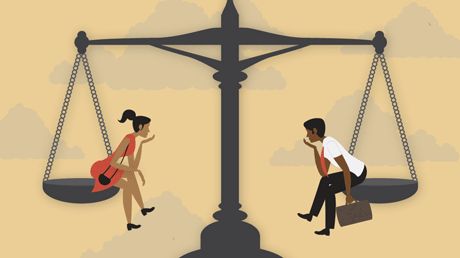What is Democratic Structure
Democratic structure refers to a system of governance or organization that is built upon principles of democracy, where power is distributed among the people or their elected representatives. In a democratic structure, decisions are made through processes that involve participation, representation, and accountability.
Key components of a democratic structure include:
- Citizen Participation: Citizens have the right to participate in decision-making processes through voting, expressing opinions, and engaging in political activities.
- Elected Representatives: Individuals are elected by the citizens to represent their interests and make decisions on their behalf. These representatives may serve in various levels of government, such as local, regional, or national.
- Rule of Law: A democratic structure upholds the rule of law, where laws apply equally to all individuals and are enforced fairly by independent judicial bodies.
- Separation of Powers: Power is divided among different branches of government, typically including the executive, legislative, and judicial branches. This separation prevents any one entity from becoming too powerful and helps maintain checks and balances. Read about How to Consolidate Democracy
- Protection of Minority Rights: A democratic structure protects the rights of minorities and ensures that their voices are heard, even in the face of majority rule.
- Free and Fair Elections: Elections are conducted regularly and fairly, allowing citizens to choose their representatives without coercion or manipulation.

- Freedom of Expression: Individuals have the right to freely express their opinions, beliefs, and ideas without fear of censorship or persecution.
- Transparency and Accountability: Government institutions are transparent in their actions and decisions, and officials are held accountable for their actions through mechanisms such as elections, oversight bodies, and the media.
A democratic structure aims to promote equality, justice, and the welfare of all citizens by providing avenues for participation, protecting rights, and ensuring responsible governance. Discover about What Are the 4 Types of Democracy
Understanding the Core Principles of Democracy
Definition of Democracy
At its core, democracy is a system of government where power resides in the hands of the people, either directly or through elected representatives. It emphasizes the principles of political equality, majority rule, and protection of minority rights.
Principles of Equality and Freedom
Central to democratic structure are the principles of equality and freedom. Every individual is deemed equal under the law, with the right to participate in the political process without discrimination based on race, gender, religion, or socioeconomic status. Freedom of speech, assembly, and association are safeguarded, fostering an environment conducive to open discourse and dissent.
Rule of Law and Human Rights
Democracy upholds the rule of law, ensuring that government actions are bound by legal principles and subject to judicial review. Human rights, including civil, political, economic, and social rights, form the cornerstone of democratic governance, protecting individuals from arbitrary state power. Learn about What is Moral Diplomacy
Components of Democratic Structure
Democratic structure comprises various components that collectively facilitate the functioning of a democratic society.
Governmental Institutions
Key governmental institutions, such as the executive, legislative, and judicial branches, operate within a framework of checks and balances, preventing the concentration of power in any single entity.
Electoral Systems
Electoral systems determine how representatives are elected, ranging from first-past-the-post systems to proportional representation, influencing the inclusivity and representativeness of democratic governance.
Political Parties
Political parties serve as vehicles for political participation, representing diverse ideologies and interests within society. They play a crucial role in shaping public policy and holding elected officials accountable.
Civil Society Organizations
Civil society organizations, including advocacy groups, NGOs, and grassroots movements, serve as watchdogs, amplifying citizen voices and advocating for social change.
Types of Democratic Structures
Democratic structures vary across nations, with different models tailored to suit cultural, historical, and institutional contexts.
Direct Democracy
In direct democracy, citizens participate directly in decision-making processes, voting on policy proposals and legislation through mechanisms such as referendums and initiatives.
Representative Democracy
Representative democracy delegates authority to elected representatives who act on behalf of the electorate, balancing popular sovereignty with the practicalities of governance.
Hybrid Models
Hybrid models combine elements of direct and representative democracy, blending participatory mechanisms with representative institutions to enhance democratic legitimacy and responsiveness.
Advantages of Democratic Structure
Protection of Rights and Liberties
Democratic structure ensures the protection of individual rights and liberties, fostering an inclusive society where diverse perspectives are respected and valued.
Promotion of Political Participation
By enabling citizens to engage in political processes, democracy fosters civic engagement and empowerment, enhancing public discourse and fostering social cohesion.
Accountability and Transparency
Democratic institutions are accountable to the electorate, fostering transparency and accountability in governance, thereby reducing the risk of corruption and abuse of power.
Challenges and Criticisms
Despite its merits, democratic structure faces challenges and criticisms that warrant consideration.
Polarization and Gridlock
Political polarization and gridlock can impede decision-making processes, hindering effective governance and exacerbating social divisions.

Elite Capture and Corruption
Democracy is vulnerable to elite capture and corruption, where powerful interests manipulate political processes for personal gain, undermining the integrity of democratic institutions.
Threats to Minority Rights
Minority rights may be marginalized or disregarded in democratic societies, posing a threat to the principles of equality and inclusion.
Case Studies: Democratic Structures Around the World
Exploring diverse democratic structures worldwide provides valuable insights into the strengths and weaknesses of different models, informing ongoing efforts to strengthen democratic governance.
Conclusion
In conclusion, democratic structure embodies the principles of equality, freedom, and accountability, serving as a cornerstone of modern governance. While facing challenges and criticisms, democracy remains a dynamic and resilient system capable of adaptation and renewal, reflecting the evolving needs and aspirations of society.
FAQs
- What is the role of civil society organizations in democratic structure?
- Civil society organizations play a crucial role in democratic governance by advocating for citizen rights, promoting transparency, and holding elected officials accountable.
- How do electoral systems impact democratic representation?
- Electoral systems determine how representatives are elected, influencing the inclusivity and representativeness of democratic governance.
- What are the key principles of democracy?
- The key principles of democracy include political equality, freedom of expression, rule of law, and protection of minority rights.
- How does direct democracy differ from representative democracy?
- Direct democracy involves direct citizen participation in decision-making processes, while representative democracy delegates authority to elected representatives.
- What are the main challenges facing democratic structures today?
- Challenges facing democratic structures include political polarization, elite capture, threats to minority rights, and the erosion of trust in democratic institutions.







